Abstract
1 Polylysine is an extremely potent releaser of histamine from rat peritoneal mast cells. Isolated mesenteric mast cells of the rat also respond to the secretagogue but guinea-pig mesenteric cells are unreactive. 2 The release does not require the presence of extracellular calcium ions but shows some dependence on internal stores of the cation. 3 The effect of polylysine is blocked by extremes of temperature and by metabolic inhibitors. 4 The release is very rapid and is virtually complete within 10 s of adding the inducer. 5 The release is unaffected by the anti-allergic drug, doxantrazole, but is inhibited by theophylline and disodium cromoglycate. The latter compounds are effective in both the presence and absence of added calcium. This result is discussed in terms of the postulated effect of the drugs on calcium transport.
Full text
PDF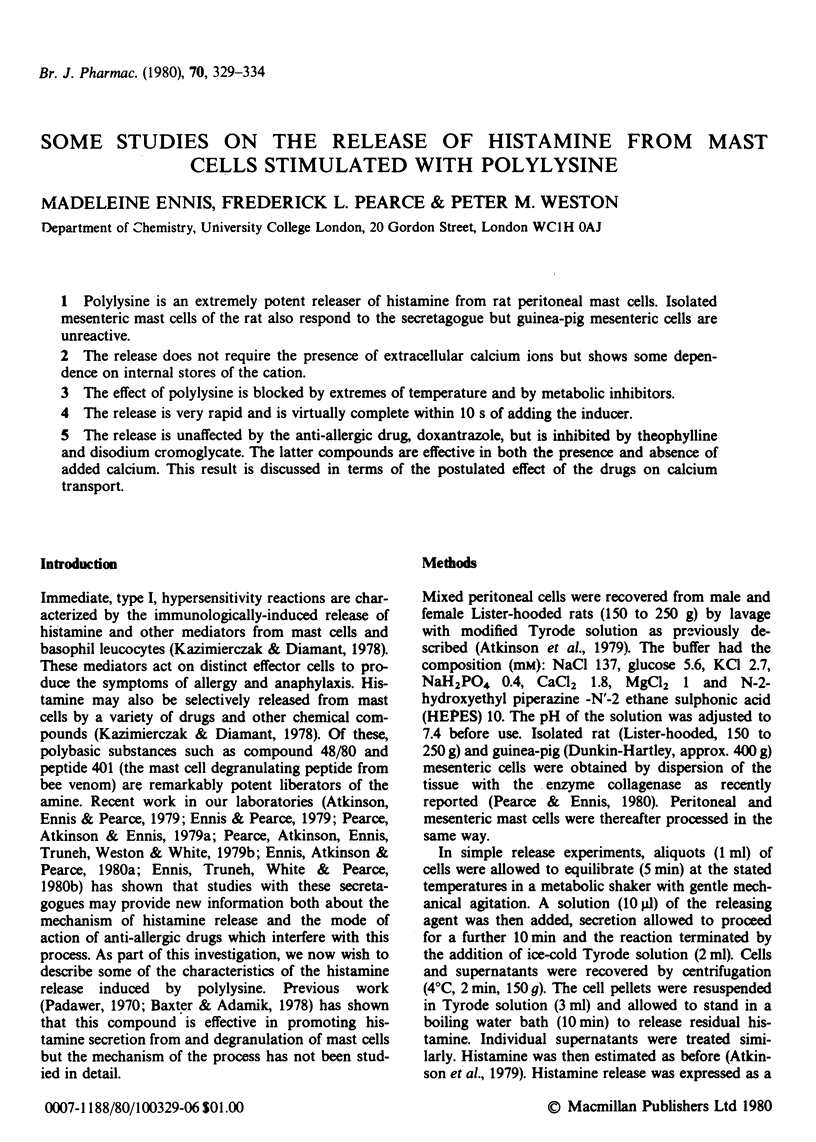
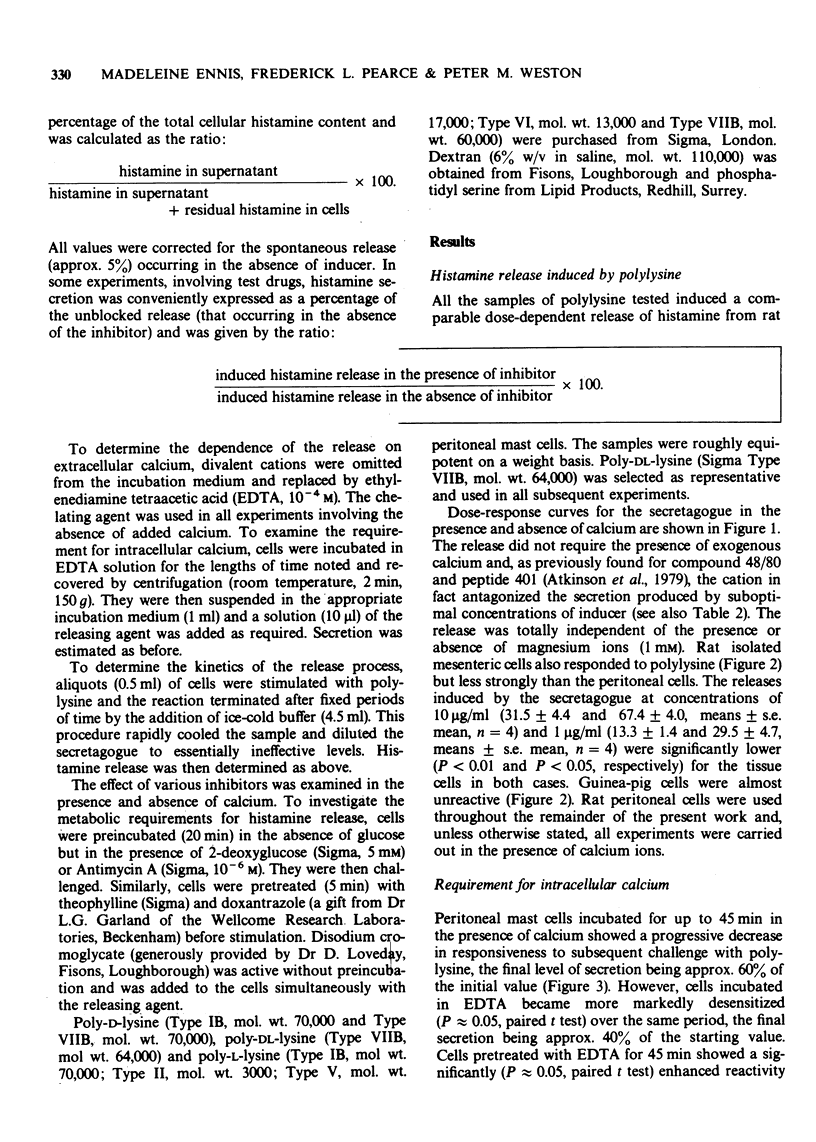
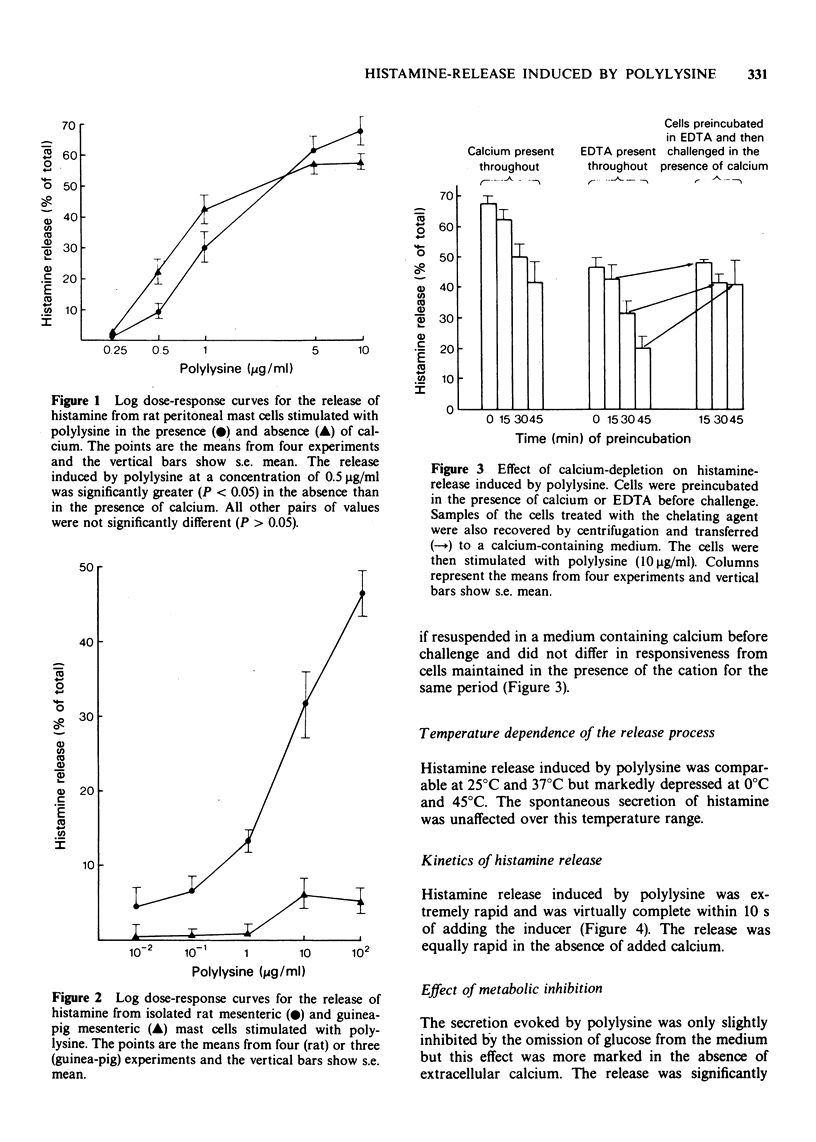
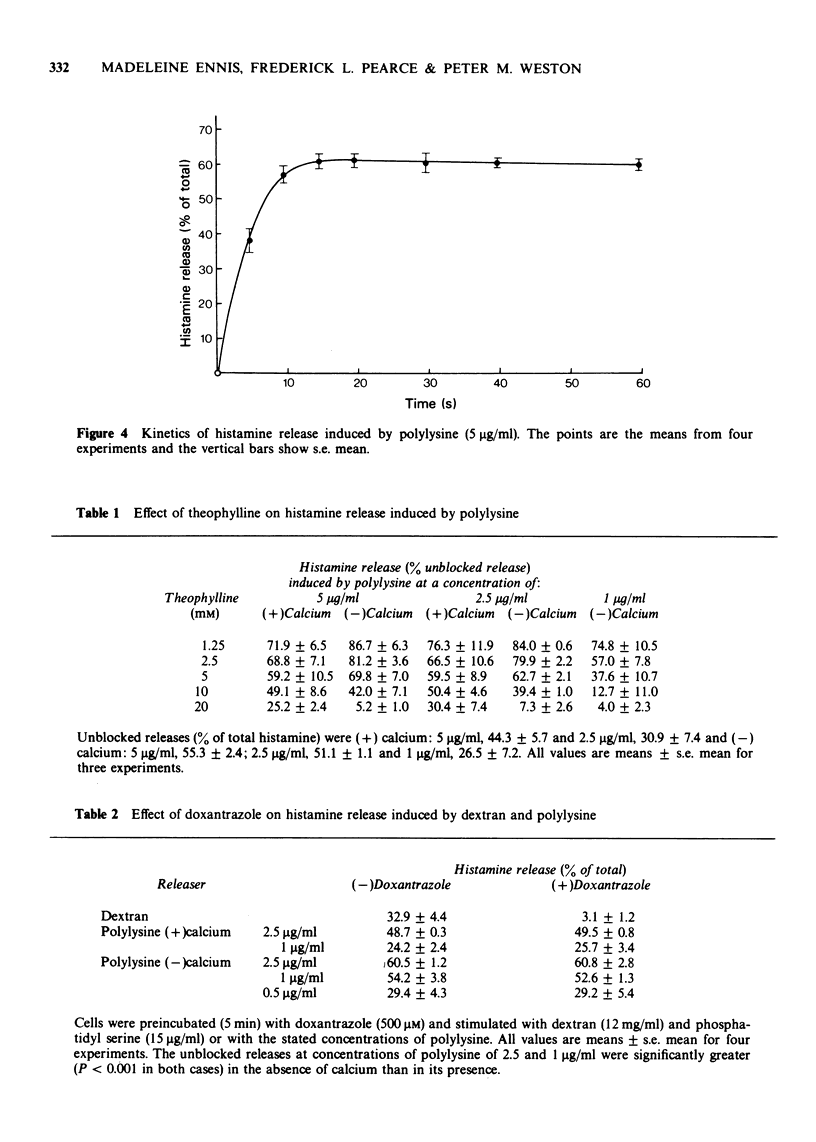
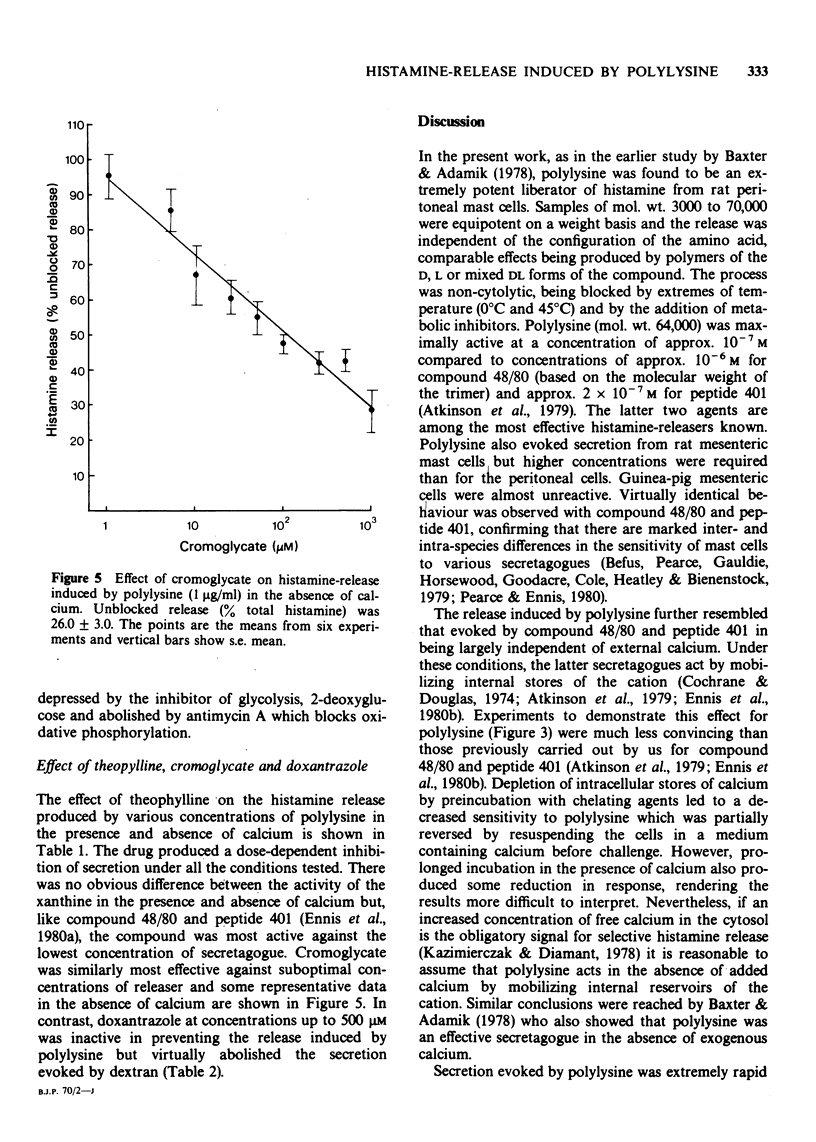
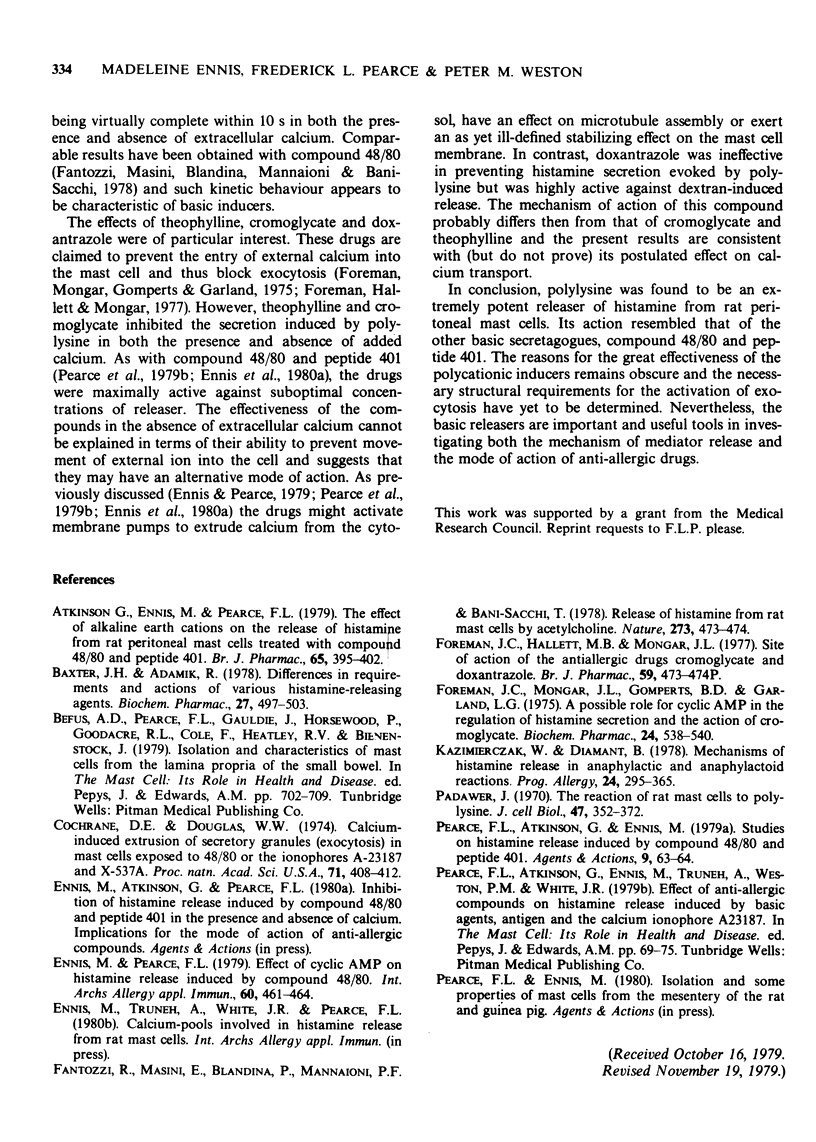
Selected References
These references are in PubMed. This may not be the complete list of references from this article.
- Atkinson G., Ennis M., Pearce F. L. The effect of alkaline earth cations on the release of histamine from rat peritoneal mast cells treated with compound 48/80 and peptide 401. Br J Pharmacol. 1979 Mar;65(3):395–402. doi: 10.1111/j.1476-5381.1979.tb07843.x. [DOI] [PMC free article] [PubMed] [Google Scholar]
- Baxter J. H., Adamik R. Differences in requirements and actions of various histamine-releasing agents. Biochem Pharmacol. 1978 Feb 15;27(4):497–503. doi: 10.1016/0006-2952(78)90384-2. [DOI] [PubMed] [Google Scholar]
- Cochrane D. E., Douglas W. W. Calcium-induced extrusion of secretory granules (exocytosis) in mast cells exposed to 48-80 or the ionophores A-23187 and X-537A. Proc Natl Acad Sci U S A. 1974 Feb;71(2):408–412. doi: 10.1073/pnas.71.2.408. [DOI] [PMC free article] [PubMed] [Google Scholar]
- Ennis M., Pearce F. L. Effect of cyclic AMP on histamine release induced by compound 48/80. Int Arch Allergy Appl Immunol. 1979;60(4):461–464. doi: 10.1159/000232377. [DOI] [PubMed] [Google Scholar]
- Fantozzi R., Masini E., Blandina P., Mannaioni P. F., Bani-Sacchi T. Release of histamine from rat mast cells by acetylcholine. Nature. 1978 Jun 8;273(5662):473–474. doi: 10.1038/273473a0. [DOI] [PubMed] [Google Scholar]
- Foreman J. C., Hallett M. B., Mongar J. L. Site of action of the antiallergic drugs cromoglycate and doxantrazole [proceedings]. Br J Pharmacol. 1977 Mar;59(3):473P–474P. [PMC free article] [PubMed] [Google Scholar]
- Foreman J. C., Mongar J. L., Gomperts B. D., Garland L. G. A possible role for cyclic AMP in the regulation of histamine secretion and the action of cromoglycate. Biochem Pharmacol. 1975 Feb 15;24(4):538–540. doi: 10.1016/0006-2952(75)90142-2. [DOI] [PubMed] [Google Scholar]
- Kazimierczak W., Diamant B. Mechanisms of histamine release in anaphylactic and anaphylactoid reactions. Prog Allergy. 1978;24:295–365. [PubMed] [Google Scholar]
- Pearce F. L., Atkinson G., Ennis M. Studies on histamine release induced by compound 48/80 and peptide 401 [proceedings]. Agents Actions. 1979 Apr;9(1):63–64. doi: 10.1007/BF02024114. [DOI] [PubMed] [Google Scholar]


